|
| |
Back to
airliners
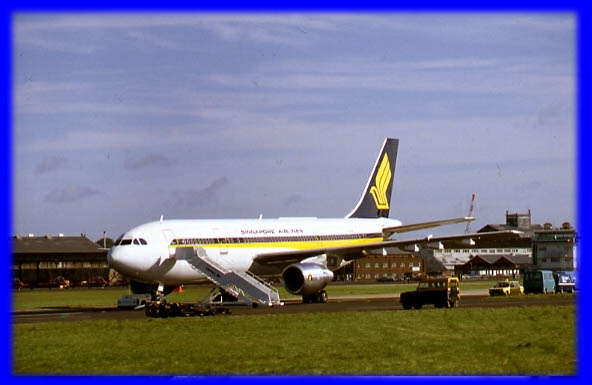 |
The Airbus A300B was the first product of a
consortium involving the major aerospace companies of Britain,
France, Germany, Italy and Spain. It was designed for relatively
short range, high density routes. Development was funded,
controversially, by loans from several of the affected governments;
though these have now been repaid. Seating up to 330 people, about
250 were built before it was superseded in production by the more
modern and versatile A330 / A340 series.
This A300B (9V-STA) of Singapore Airlines was
demonstrated at Farnborough in September 1980. |
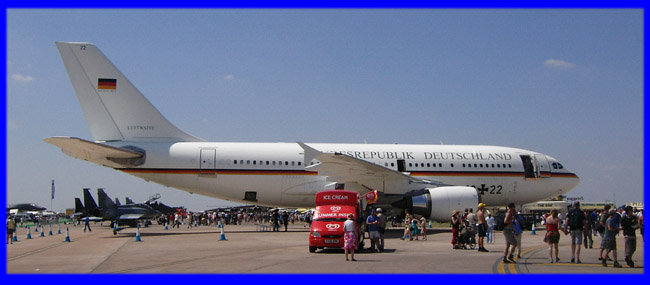 |
The Airbus A310 is a short-fuselage, long
range development of the A300. It first flew in April 1982. Seating
up to 280 (at a squeeze), it can cruise at over 500mph for up to
5,700 miles. It can be powered by Pratt & Whitney JT9D or 4150
series engines or General Electric CF6s of between 48 and 56
thousand pounds. 260 had been built before it was superseded by the
A330 and production ended. This one,
operated by the German government, was at Fairford in July 2005 |
 |
The Airbus A318 and 319 are short-fuselage
developments of the A320. The 318, which is 103 feet 2 inches long,
seats up to 115; the 319, 111 feet long, up to 140. The 319 was the
first to fly, in August 1995, with the 318 following in January
2002. They can be powered by CFM56 engines, or Pratt & Whitney 6000s
(for the 318) or IAE V2500s (for the 319). They compete with the
short-fuselage versions of the Boeing 737. At the time of writing
(March 2006) they are still in production; 1,273 of the 319 have
been ordered, plus 82 of the A318.
This A318 was at Paris - Charles de Gaulle, July 2005. |
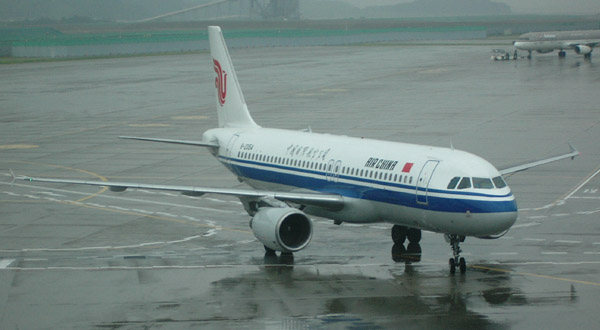 |
The Airbus A320 was the third product from
the Airbus consortium, and their first narrow-bodied airliner. It
was designed specifically to compete with the Boeing 737, whose
operating economics were making it almost the only viable choice in
its class. The A320 has an advanced computerised (`fly-by-wire')
control system which makes it very efficient when operated properly.
It first flew in 1987, since when it has been increasingly
successful. This A320, operated by Air
China, was pictured at Seoul in July 2005. |
 |
The Airbus A330 shares the majority of its
airframe with the four-engined A340, but is optimised for shorter
range. Having only two engines to lift a similar weight (606,000lb),
the engines are of course bigger: 64 to 73 thousand pounds thrust,
either General Electric CF6s, Pratt & Whitney 4160 series or
Rolls-Royce Trents. It can take up to 440 people at a squeeze, but
more normally 290, for up to 7,350 miles at a cruising speed of
535mph. It first flew in November 1992, since when 571 have been
ordered (up to March 2006).
This one was pictures at Seoul in July 2005. |
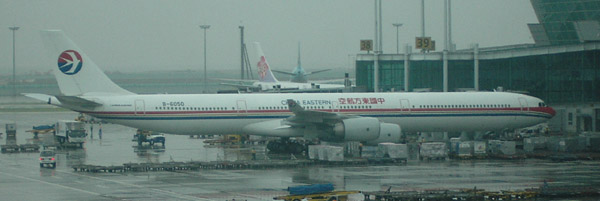 |
The Airbus A340 was developed concurrently
with the A330 but is optimised for longer range. Its four CFM56
engines develop about 32,000lb thrust, giving it a cruising speed of
545mph and a maximum range of almost 10,000 miles (for the long
range series 500). The fuselage is normally the same as the A330,
but there is also a stretched version, the series 600, 247 feet long
as opposed to the more normal 194 feet 10 inches, and seating 370 in
a three-class layout. This beast is powered by Rolls Royce Trent
engines of around 55,000lb thrust, and has a maximum weight of over
800,000lb. This picture is of a series
600 operated by China Eastern, at a very wet Seoul in July 2005. |
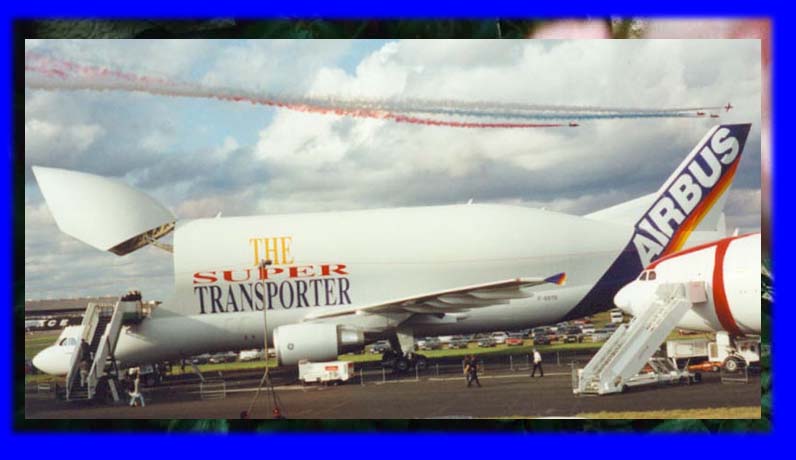 |
The Airbus Super Transporter is a converted
A300 with an outsize cargo hold, able to fit entire sets of airbus
components such as wings. This allows the Airbus consortium to move
large components rapidly between its factories in different
countries. Until the ST arrived in 1998, all Airbus components had
been carried by elderly converted Boeing Stratocruisers called
Guppies (see the
American airliners section) - hardly the best advertisement for
Airbus!
This ST is seen at the Farnborough Air Show in
1998. Note the Royal Air Force Aerobatic team, the `Red Arrows',
passing behind. |
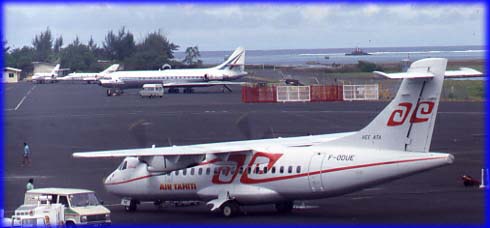 |
The ATR42 is built by a European consortium
called Avions Transport Regionnel, comprising Aerospatiale of France
and Aeritalia of Italy. It was designed to seat 42 passengers (some
airlines try to cram more in, but this is unwise). It first flew in
August1984. Its efficient Pratt & Whitney PW120 turboprops give it a
cost advantage over the earlier Dart-powered regional airliners, and
the ATR42 remains very popular with operators.
This example (F-ODUE), belonging to Air Tahiti,
was seen at Papaeete in September 1988. Note also the Caravelle in
the background. |
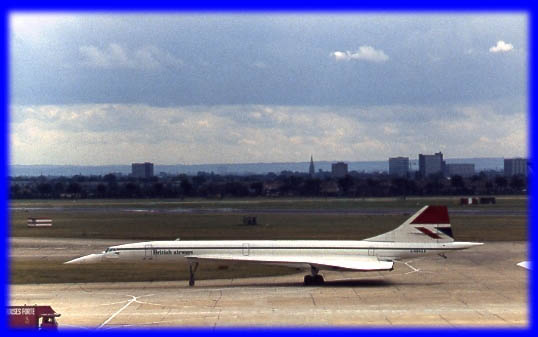 |
The BAC / Aerospatiale Concorde is one of the
most remarkable aircraft in history. First flying in March 1969, it
was just beaten as the world's first supersonic airliner by the
Russian Tupolev Tu144, but the Concorde was the only one of the two
to reach successful operation. It reached Mach 2.2 (2.2 times the
speed of sound) at an altitude of 51,000 feet. Among hundreds of
engineering innovations, it included a drooping nose so that the
pilot could see where he was going when approaching the runway to
land.
Thanks to political intervention on grounds of
noise, only twelve Concordes ever entered service: with British
Airways and Air France. This BA example was seen at London Heathrow
in August 1979. They were withdrawn from service in 2003; one of two
examples of record-breaking aircraft with no feasible successor
being relegated prematurely to museums (the other being the
Lockheed SR71). |





|